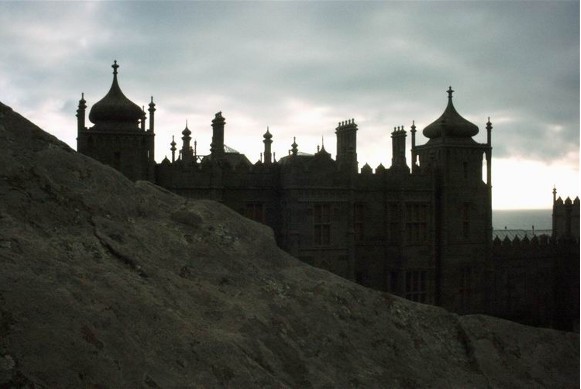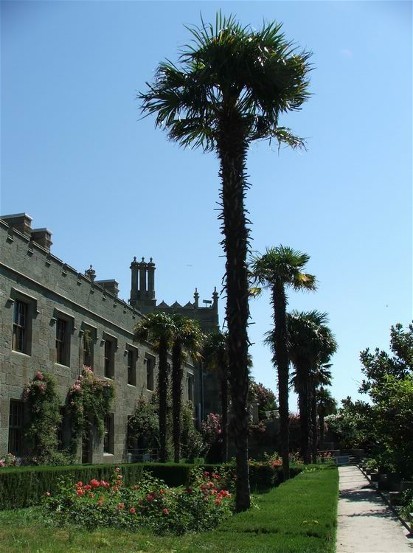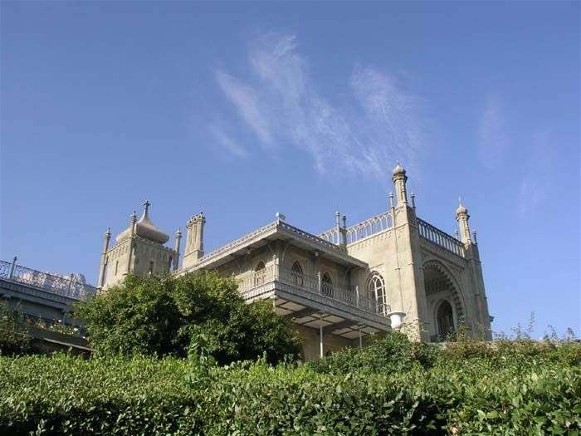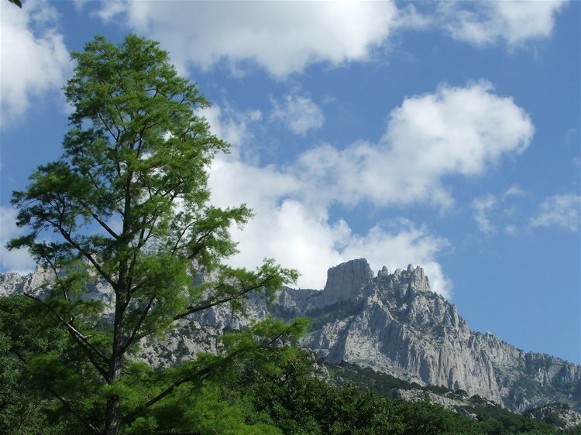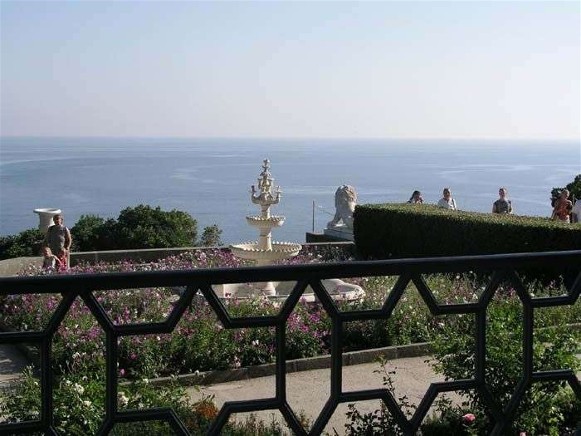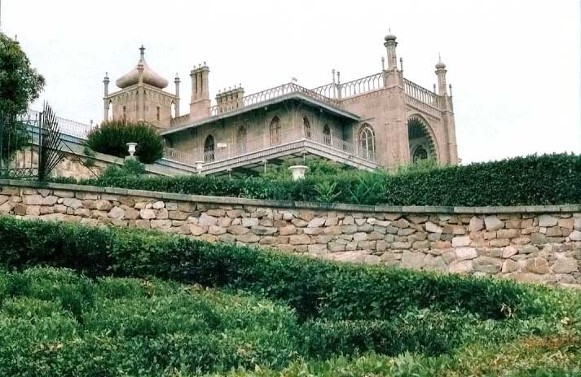Alupka
Alupka [Алупка]. See Google Map; see EU map: IX-15. City (2021 pop 9,063) on the Crimean southern shore, 17 km southwest of Yalta and under the administration of the Yalta city council. Oldest settlements here date to 8,000 BC; earliest written reference is in 960 (by the Khazar ruler Joseph) to Alubika (one of settlements he controlled in the Crimea) and in 14–15th centuries to a small Genoese-controlled port, Lupika. It is thought the name derives from the Greek αλεπού (alepou), which means a vixen. After the annexation of the Crimea into the Russian Empire (in 1783) the settlement became the property of Prince Georgii Potemkin and in the 1820’s Prince Mikhail Vorontsov who had his palace built there (1828-48).
The population of Alupka grew to 955 residents in 1897 and 2,974 in 1926; Alupka gained city status in 1938 as it grew to 7,787 in 1939, 8,920 in 1959, 10,381 in 1970, and 11,404 in 1979. With aging population and economic slowdown a decline set in: 10,841 in 1989, 10,500 in 1998, 9,018 in 2001, and 8,425 in 2010, with stabilization at 8,520 in 2013, subsequent dips (7,771 in 2014) and rises (8,017 in 2017 to 9,063 in 2021). In 1897 the town’s residents were 75.0 percent Muslim (mainly Crimean Tatar), 23.4 percent Orthodox (mainly Russian, Ukrainian and Greek) and 1.6 percent others. Over time the city’s Crimean Tatar population was drastically reduced: almost all of it was deported during the deportation of Crimean Tatars in 1944; some Crimean Tatars returned after the 1991 Ukraine’s Declaration of Independence. In 2001, the ethnic make-up of the residents (in percent) was: Russians (64.8), Ukrainians (27.2), Belarusians (1.8) and Crimean Tatars (1.7).
Alupka’s climate makes it one of the best resort areas in the Crimea. The city has 13 sanatoriums and resort buildings, including the first and largest for children, the Bobrov Soniachnyi Sanatorium, named after its founder, the physician Oleksandеr Bobrov. Besides 2 schools, a boarding school, and 2 libraries, the city has a training school for sanatoria staff. It also has a branch of the Masandra winery (producing Madeira and Red Port fortified wines) with its vineyard, a branch of the Livadiia vineyard farm. The former palace of Prince Mikhail Vorontsov, built in 1828–48 and designed by the English architect E. Blore in pseudo-Gothic style, with a Moorish portal and surrounded by a 40 ha park, has been converted into a museum containing 19th-century furniture, porcelain, bronze, crystal, and works by Western European, Russian, and Ukrainian artists (including Kostiantyn Trutovsky and Serhii Vasylkivsky). The town also hosts a memorial museum and a bust of the city’s native and twice Hero of the Soviet Union, the Crimean Tatar flying ace and test pilot Amet-Khan Sultan. East of Alupka, near Koreiz, there is a 3 kilometer Gondola lift, built in 1987 (one of the largest in Europe, split into two stages) to take visitors north to a viewing platform at the Ai-Petri peak (elevation 1,234 m).
BIBLIOGRAPHY
Vermenych, Ya. ‘Alupka,’ Entsyklopediia istoriï Ukraïny, vol 1 (Kyiv 2003)
Ihor Stebelsky
[This article was updated in 2024.]
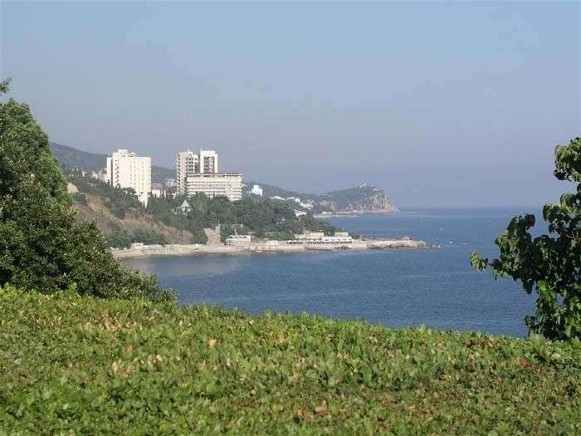
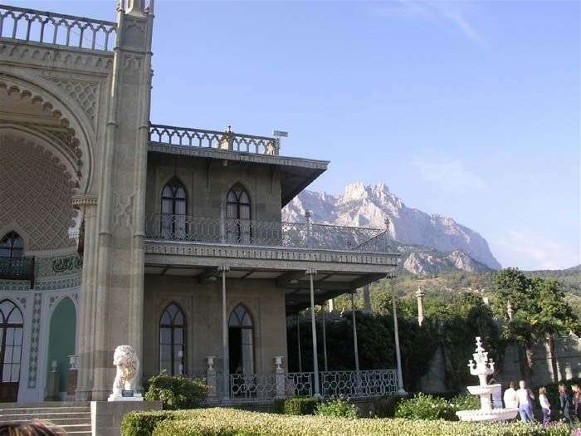
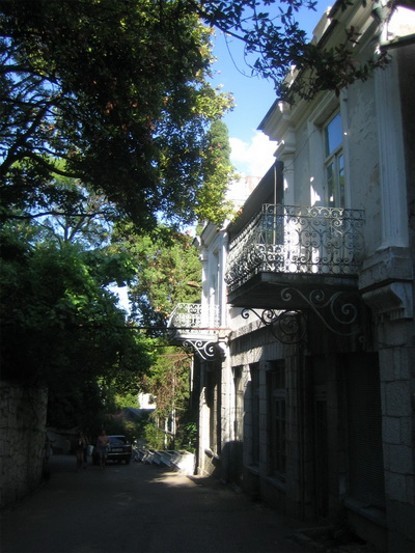
.jpg)
